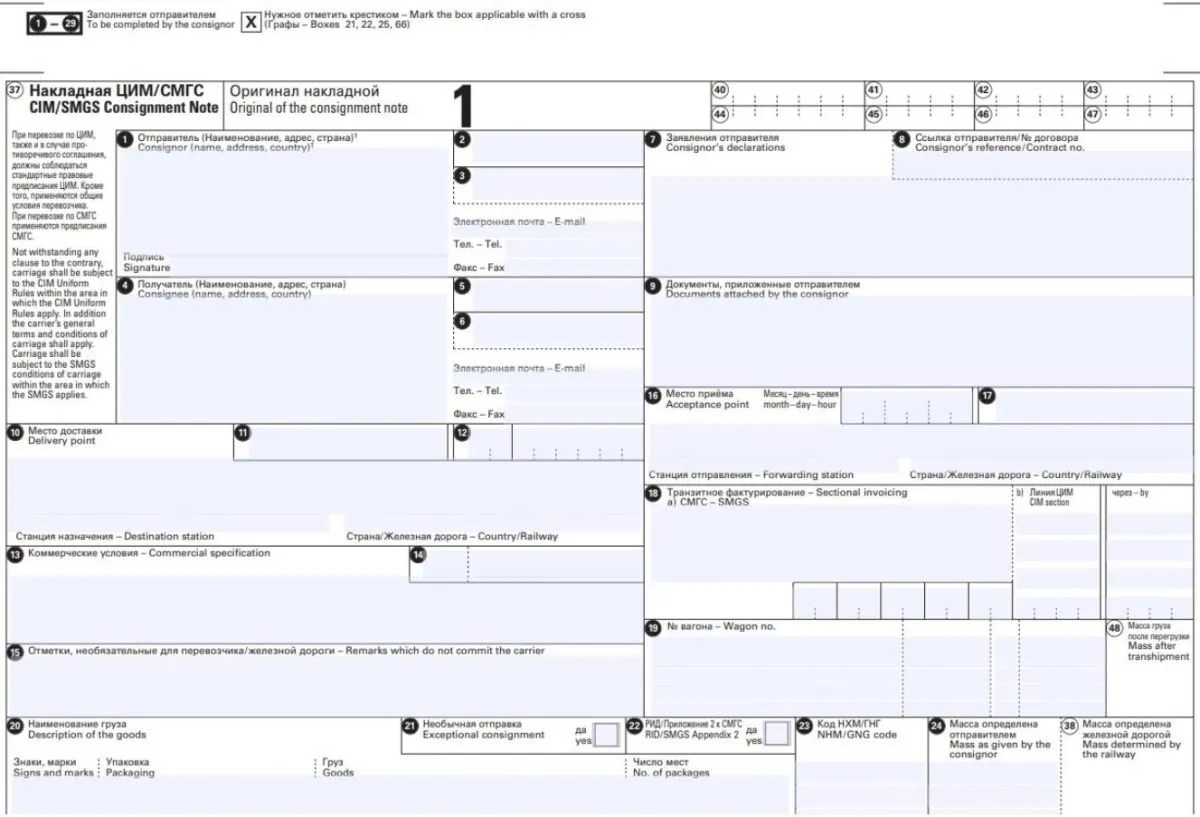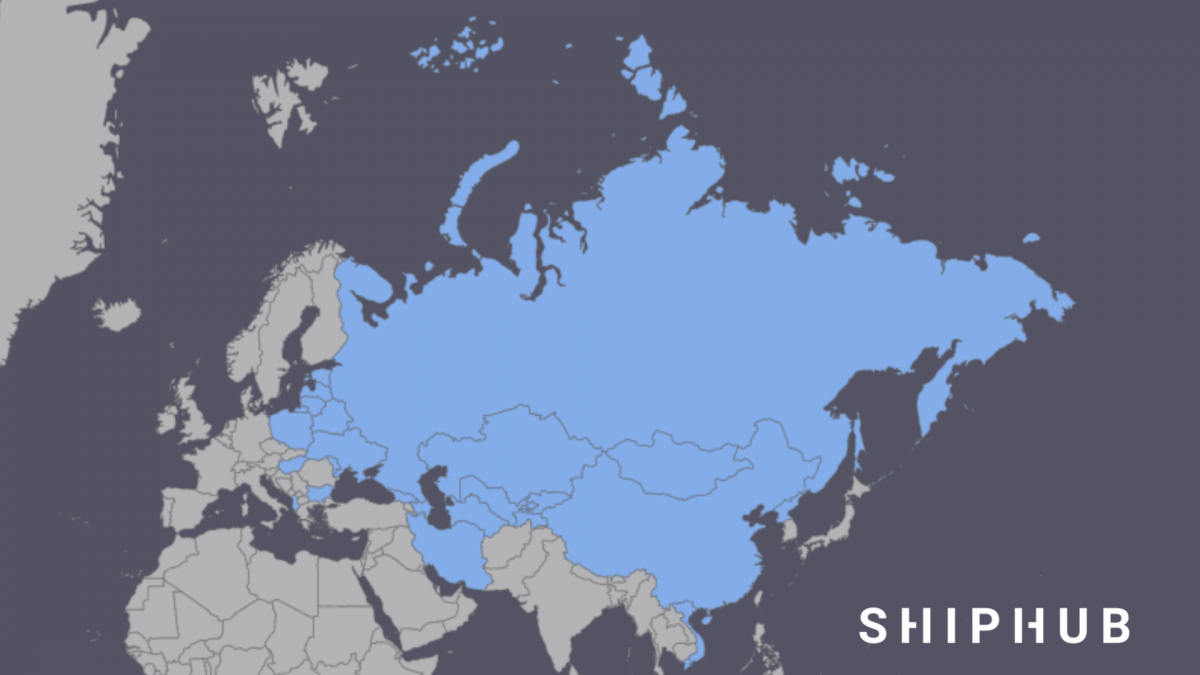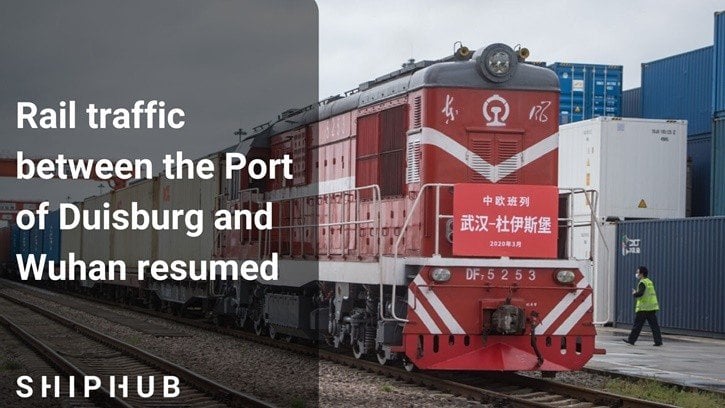Many regulations and directives regulate international rail transport. One of the most important conventions developed by the OSJD – Organization for Cooperation of Railways, is SMGS or Agreement on the International Goods Transport by Rail. It regulates freight traffic in a certain area. The latest version came into force on July 15, 2015. The SMGS rail consignment note is used in rail transport with the former USSR and the Far East countries.
What does SMGS consist of?
The SMGS waybill (consignment note) consists of several sheets:
- original of the consignment note – for the consignee of the consignment
- waybill for the destination station
- waybill for the departure station
- certificate of receipt
- arrival note
- additional consignment note, for statistical purposes.
SMGS is issued in the name of a specific name, as a non-portable and non-transferable document. It means that the goods are sent to the designated consignee specified by name, who ordered the goods and must pick it up in person. Alternatively, the consignee gives another person the authorization. Ownership of such goods can only be transferred to another person by assignment of the rights, which involves a number of formalities.

In which countries is the SMGS used?
The SMGS consignment note is used in rail transport with the former USSR and the Far East countries. It applies to countries such as:
- The Republic of Azerbaijan
- The Republic of Albania
- The Republic of Belarus
- The Republic of Bulgaria
- The Republic of Hungary
- The Socialist Republic of Vietnam
- Georgia
- The Islamic Republic of Iran
- The Republic of Kazakhstan
- Mongolia
- The Republic of Poland
- The Russian Federation
- Ukraine
- The People’s Republic of China
- The Democratic People’s Republic of Korea
- The Republic of Kyrgyzstan
- The Republic of Latvia
- The Republic of Lithuania
- The Republic of Moldova
- The Republic of Tajikistan
- Turkmenistan
- The Republic of Uzbekistan
- The Republic of Estonia.

You will not move this under SMGS
The following goods will not be accepted for carriage by the SMGS carriers:
- small consignments with a unit weight of less than 10 kg – these restrictions do not apply to goods which the volume of one piece exceeding 0,1 m3
- goods with a unit weight exceeding 1,5 tons in transshipment of wagons covered with a non-sliding roof
- articles the carriage of which is prohibited even in the territory of one of the countries, whose railways are to participate in the transport
- some dangerous goods regulated by the Agreement on the International Goods Transport by Rail.
More about SMGS
SMGS is a consignment note that confirms the conclusion of a transport contract with a railway undertaking. The contract is concluded (takes effect) when the railway undertaking accepts the shipment and stamps it at the dispatch station (placing the date on the consignment note).
The consignment note is filled in Russian or Chinese. It depends on the country to which the goods are transported.
The contract of carriage may be concluded in an electronic form.
SMGS and CIM – differences
Except for SMGS, there is also a CIM document. The CIM rail consignment note is valid in Western Europe while the SMGS is used mostly in Eastern Europe. In the case of transport of dangerous goods by rail, several additional markings and boxes in the SMGS form apply. However, these are slight differences compared to the CIM rail consignment note.





